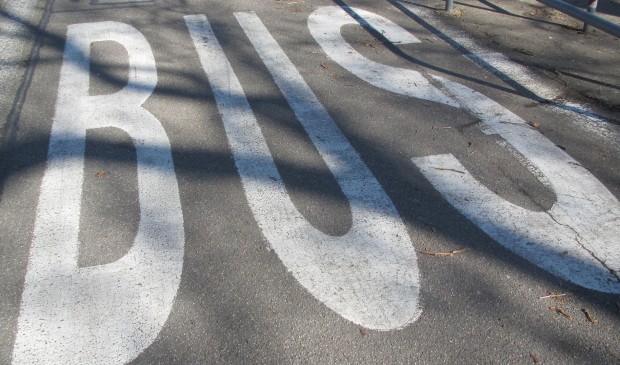Cap Metro asks for more transit in spending plan
Wednesday, November 25, 2015 by
Tyler Whitson As City Council considers a plan to disperse the “quarter-cent fund” among transportation projects around the city, the Capital Metropolitan Transportation Authority – the agency that initially contributed the funding to the city – is asking Council to prioritize more of its spending in a way that emphasizes public transit.
“If those funds were general transportation funds, then I think the city staff did a great job of doing a thorough analysis of their needs, ranking them and prioritizing (them), et cetera,” said Todd Hemingson, Capital Metro’s vice president of strategic planning and development, to the Austin Monitor on Monday. “However, these are not general transportation funds.”
Hemingson continued. “These are public transportation funds collected from the (Cap Metro) 1-cent sales tax, and for that reason – and because we continue to see all these challenges with moving our buses efficiently and effectively through the city – we thought it made sense to spend the bulk of those dollars on projects that directly benefit public transportation.”
The quarter-cent fund is the product of an interlocal agreement that the city entered into with Cap Metro between 2001 and 2004, in which the transit agency agreed to dedicate a quarter of the 1-cent sales tax collected during that time to the city for transportation projects.
A Nov. 9 memo from City Manager Marc Ott notes that, per the agreement, the money must be spent to “enhance regional mobility; support public transit; provide leverage for federal or private funds; add to an existing program; or expedite a critical mobility project.”
Over the years, past Councils have dispersed most of the $139.5 million collected, leaving $21.8 for posterity. In June, Council passed a resolution stating that it should work with the Austin Transportation Department to disperse the remainder “equitably across all Council districts.”
Transportation Department staff presented a project list at a Nov. 19 Council Mobility Committee meeting that includes top priorities as identified by Council members and staff. The list prioritizes sidewalks, traffic signals, urban trails, transportation management systems and bicycle facilities.
A staff breakdown notes that 1 percent of the proposed spending would go toward Cap Metro projects, tying it for last place with “local area traffic management.”
The committee recommended unanimously that each Council office come up with a list of $1.9 million in projects for its district and submit it to city staff by the end of the year, after which Mayor Steve Adler’s office would allocate the remaining funds to citywide projects. Council Member Don Zimmerman quipped that the committee was in “violent agreement” on the issue.
Although most of the citizens who spoke during the public comment period supported staff’s recommendations, Hemingson asked Council to reconsider a list of projects that Cap Metro President Linda Watson sent to Public Works Department Director Howard Lazarus in July.
“We simply would like to see a greater focus on projects and initiatives that directly improve public transportation services,” Hemingson said.
That memo identified the need to spend $3.6 million on eight new pairs of MetroRapid stations in six Council districts, $6 million on three Project Connect corridor studies, $4.1 million on a park-and-ride facility in South Central Austin and more.
Council Member Delia Garza, who sits on the Cap Metro board of directors, responded. “A lot of these projects that have been suggested really do improve connectivity, in general,” she said. “Some of the priorities in my district were bike lanes, sidewalks – and improving all those little things, in my opinion, improves people’s accessibility to our public transit.”
Council Member Ann Kitchen, who also sits on the Cap Metro board, jumped in. “Particularly in the discussion of sidewalks, we talked about connections to schools and also connections to bus stops, so that was an important part of the discussion,” she said.
A significant portion of staff’s proposal includes “grouped mobility projects around schools and transit.”
Council Member Ora Houston, who is not on the committee but sat in on the meeting, asked Kitchen to share Cap Metro’s list with the rest of Council. Kitchen responded that she would.
Hemingson addressed these comments in his interview with the Monitor. “We acknowledge that many of the things they selected tangentially or indirectly benefit transit – like improved sidewalks are absolutely important to help people get to and from transit stops – and we’re appreciative of the city’s efforts on that front,” he said.
However, he reiterated that Cap Metro believes the funds should support public transit projects, including those that give buses priority in traffic. “Signal priority, dedicated transit lanes, ‘queue jumpers’ and other (tools) that are directly helping us improve our reliability and service quality – that’s what we would have preferred to see the dollars be spent on,” Hemingson said.
Queue jumpers are intersection configurations that allow buses to get ahead of traffic when a light changes and often involve a special lane and signal.
In the coming weeks, Hemingson said that Cap Metro will continue to talk to Council about including some of its proposals in the spending plan it will ultimately adopt.
You're a community leader
And we’re honored you look to us for serious, in-depth news. You know a strong community needs local and dedicated watchdog reporting. We’re here for you and that won’t change. Now will you take the powerful next step and support our nonprofit news organization?










